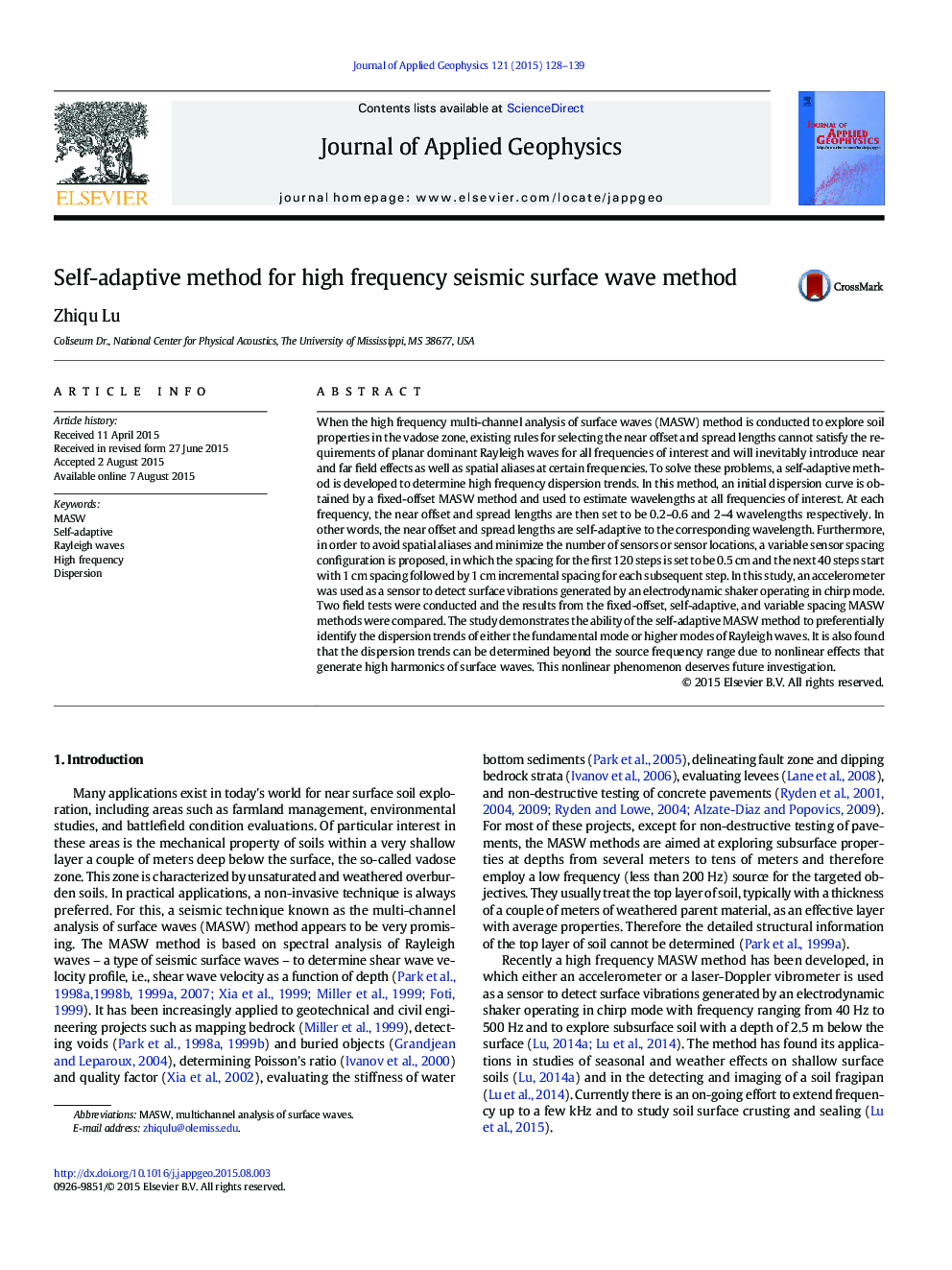| Article ID | Journal | Published Year | Pages | File Type |
|---|---|---|---|---|
| 4739889 | Journal of Applied Geophysics | 2015 | 12 Pages |
•Compared MASW overtone images using several combinations of offsets•Self-adaptive method for high frequency MASW, up to kHz range•A variable sensor spacing configuration•Preferentially determined either the fundamental mode or higher modes of Rayleigh waves•Revealed a nonlinear phenomenon
When the high frequency multi-channel analysis of surface waves (MASW) method is conducted to explore soil properties in the vadose zone, existing rules for selecting the near offset and spread lengths cannot satisfy the requirements of planar dominant Rayleigh waves for all frequencies of interest and will inevitably introduce near and far field effects as well as spatial aliases at certain frequencies. To solve these problems, a self-adaptive method is developed to determine high frequency dispersion trends. In this method, an initial dispersion curve is obtained by a fixed-offset MASW method and used to estimate wavelengths at all frequencies of interest. At each frequency, the near offset and spread lengths are then set to be 0.2–0.6 and 2–4 wavelengths respectively. In other words, the near offset and spread lengths are self-adaptive to the corresponding wavelength. Furthermore, in order to avoid spatial aliases and minimize the number of sensors or sensor locations, a variable sensor spacing configuration is proposed, in which the spacing for the first 120 steps is set to be 0.5 cm and the next 40 steps start with 1 cm spacing followed by 1 cm incremental spacing for each subsequent step. In this study, an accelerometer was used as a sensor to detect surface vibrations generated by an electrodynamic shaker operating in chirp mode. Two field tests were conducted and the results from the fixed-offset, self-adaptive, and variable spacing MASW methods were compared. The study demonstrates the ability of the self-adaptive MASW method to preferentially identify the dispersion trends of either the fundamental mode or higher modes of Rayleigh waves. It is also found that the dispersion trends can be determined beyond the source frequency range due to nonlinear effects that generate high harmonics of surface waves. This nonlinear phenomenon deserves future investigation.
